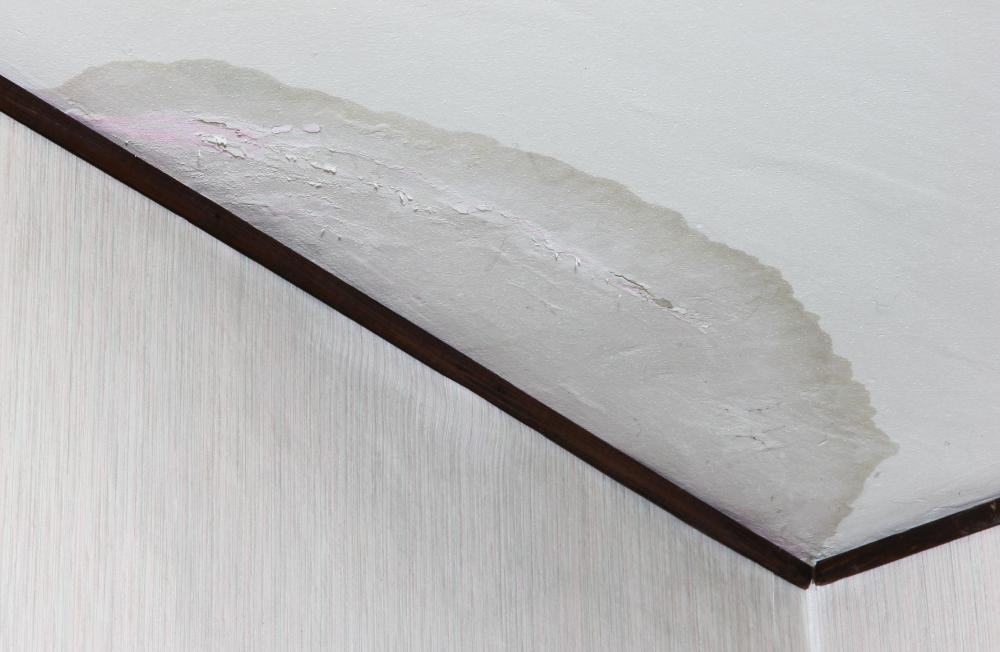At HomeQuestionsAnswered, we're committed to delivering accurate, trustworthy information. Our expert-authored content is rigorously fact-checked and sourced from credible authorities. Discover how we uphold the highest standards in providing you with reliable knowledge.
How Do I Repair Basement Water Damage?
Basement water damage is a very common household problem. Many basements experience some form of water damage at some point or another, whether it is from basement seepage, broken basement plumbing, failed sump pumps, leaking foundation walls or improper grading and window installation. The first step when dealing with water damage is to turn off the gas supply to any appliances whose pilot lights or ignition systems are under water and to address the cause of the flooding. After the source of the basement water damage has been dealt with, the process of cleanup can begin. Repairing basement water damage will depend on the extent of the damage and the length of time that the water was present, and it might include things such as drying out any wet areas, killing any mold that has grown and replacing damaged material such as drywall or carpeting.
The first step in basement water damage cleanup is to remove as much water from the basement as quickly as possible. A wet/dry vacuum or submersible pump can be used to remove standing water. Windows should be opened to allow air to circulate into and out of the basement. Wet possessions should be removed from the basement and allowed to dry outside if possible. Fans should be used to dry any damp areas of the basement and to circulate air into and out of the basement, which will speed up evaporation.

Unfinished basements require very little additional work after the water has been removed. Pilot lights should be checked and re-lit. If water was present in the basement for two days or more, mold will have begun to grow. Modern building codes require that the base of all wooden walls in basements be made of treated, water-resistant wood, which is largely impervious to mold. Even in older basements, wooden studs generally can be treated with a solution of bleach and water to kill mold unless mold has had a long time to grow.

In unfinished basements, mold on floors and walls can be treated easily with a solution of one cup of bleach to one gallon of water. Make sure that your basement is well-ventilated before using bleach to clean mold. Always rinse items after washing with bleach, and allow them to dry. If mold damage is extensive, professionals in mold remediation should be called.
Basement water damage in finished basements is more serious. Assume that any area that has been wet for two days or more probably will have mold growing in it. Hard surfaces can be cleaned, but soft or absorbent materials need to be discarded.

Drywall or paneling that has absorbed water should be removed and replaced. Carpets in basements that have suffered water damage might need to be replaced, unless water damage was minor and was caught before mold would have had time to grow. A basement ceiling that has suffered water damage usually will need to have several ceiling tiles replaced.
AS FEATURED ON:
AS FEATURED ON:















Discussion Comments
Water damage is always a risk with basements. That's why only waterproof materials should be used on the walls and floors. That way, when there is water, at least those materials won't have to be changed.
@SteamLouis-- Sometimes the carpet can be saved if one acts quickly and dries it all up before the mold starts growing. It may be too late for yours. If you have dehumidifier though, I suggest running one in the basement. It really makes a huge difference with the drying process. The water from the carpet will also affect the walls and you may have mold growing in there even if you do get the carpet out.
We had seepage occur in our basement a few days ago. An old pipe started leaking and the basement was almost entirely flooded. We stopped the leakage, got a pump in there to pull the water out. But it doesn't look like the carpet can be saved. It's still very wet and I'm sure mold will start growing on it soon. We're going to have to get rid of all the carpeting, fix the flooring and get new carpets in there. But we're having all the rest of the pipes checked and any old pipes changed before we invest in all that. We don't want to go through this again.
Post your comments